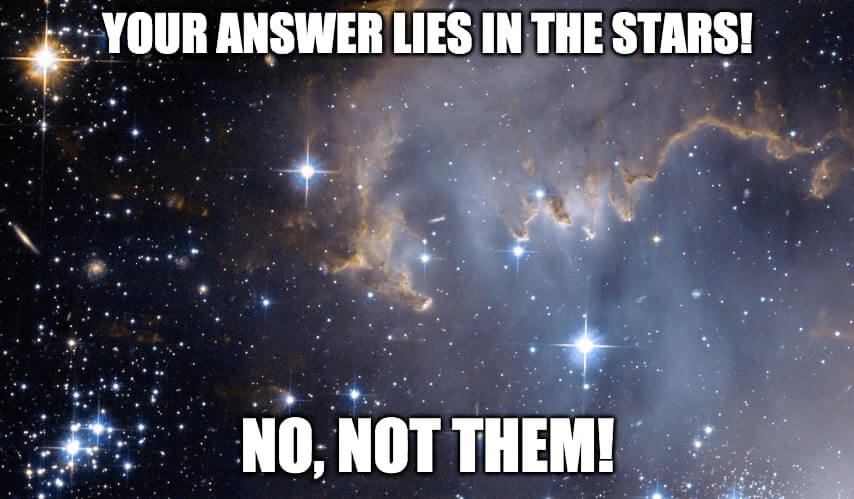How to Use the Star Method for a Job Interview
What Is the STAR Method?
Job interviews almost always contain behavioral questions that interviewers use to see how well you handled challenges and based on your responses, how well you might fit into the company’s culture. Questions such as “tell me about a time …” or “give me an example of …” are to be expected in just about any job interview. How do you best answer these questions?

Follow instead the STAR method! Telling a great story using the STAR method will show the interviewer how you handled a difficult situation at your previous/current job and give them a good way to assess how well you would be able to handle a similar situation at their company.
The STAR method will help you tell the story that will help you land that job:
Situation – Describe the situation (the setting for your story). The listener needs to understand the context in order to relate it to their own company. Keep it short and to the point.
Task – Describe your responsibility in the situation. If you were part of a team, it is important to make sure the interviewer knows how important teamwork is, but you should also be sure to focus on your role in that effort. Don’t be afraid to use the word “I” often. Remember, in the end, this should be about you.
Action – Make sure to include what you did, how you did it, why you did it and the skills that you used to do it.
Result – Describe the outcome (impact) of your work. What happened as a result, what lessons were learned.
Pro Tip: If you want to be REALLY Awesome, consider adding an “S” for Success to impress/imprint your story into the interviewer’s memory to help you stand out!
Keep in mind that there are other methods similar to STAR method, including the CAR method (Context, Action, Result) and the SOAR method (Situations, Obstacles, Actions, Results). All of these methods have one thing in common, they help you focus on how to best tell your story and they give you the opportunity to showcase your problem-solving skills, your resilience, and your strength of character. Today, we are highlighting the STAR method.
Preparing for the STAR Method
During the interview process you may be required to respond with more than one STAR story. You may be asked at various times in the interview to reply to questions that are best answered with an appropriate story that relates directly to the question. Be certain to have several of them on hand (3-5 at least) that will fit pretty much most situations. They should always be based on actual circumstances. Practice them well beforehand so that they will flow naturally and not seem rehearsed or memorized. And remember, these stories should be short and to the point and should probably not exceed 2-3 minutes each.
How do I do this?
During your preparations for the interview, research the company thoroughly, review the job description for the position and match up key components from it to your own knowledge and work experiences (make sure you use your resume to help with this – it should already contain some brief elements of STAR stories in the accomplishments you have listed). Some of the behavioral questions you will be asked will probably be tied closely to the job’s requirements and your STAR stories should be relevant to the interviewer.
Remember to look back on your own experiences and think of several occurrences where you had to problem-solve, take charge of a situation or go the extra mile to complete an important task. Use STAR to break the situation down into its 4 component parts and create a story to tell about how you took on the job and got it done.
Never sell yourself short! Everyone, especially you, has accomplished things during their lives and careers for which to be proud. It may take some thinking to arrive at them but remember that the STAR method will help you create the stories that will sell you to the interviewer. Mr. Simon will not let you do this completely on your own. Now that we have looked at the basics, let’s look some of the questions you might be asked and at a few examples of how someone might relate a story using STAR.
Types of Behavioral Questions
Many behavioral questions start out with some variation of “Tell me about a time…” Here are a few that you might expect.
- Tell me about a time that you had a conflict at work and how you resolved it.
- Describe how you handled a stressful situation.
- Give me an example of a goal you met.
- Can you describe a mistake you made and how you dealt with it?
- Describe a time when you went above and beyond what was expected of you.
- Tell me about a time when you had to deal with an upset customer.
- Which of your bosses was the best you had and why?
- How did you handle tough criticism of your work?
As I said, there are many examples of behavioral questions and many variations on these as well. Even if it seems that not all questions are applicable to you, you should be prepared to answer pretty much anything that comes your way. For instance, if you never deal with outside customers or clients, you may not expect to have to answer question 6 above.
But what if you do have customers?
Say you were in charge of computer hardware installation for your last company. Everyone from the CEO on down was your customer and from time-to-time you may have had to deal with someone who was upset with the service they received. Question 6 would be a perfect one for you to answer with a STAR Story of how you handled an upset customer.
STAR Story Examples
For illustrative purposes, the first example below shows how each of the 4 STARs plays its part in forming the basis of the narrative.
Tell me about a time when you had to deal with a stressful situation at work and what was the outcome?
Situation – Just days before a major client project was due, my manager informed me that the person in charge went on sick leave and I was given her assignment with no extension of the deadline.
Task – I had been a member of the team but now I was in charge.
Action – I immediately met with the other team members to review everyone’s assignment and progress, delegated new work assignments, determined if any work needed reassignment, set some new priorities and established how we would use overtime if needed to keep on schedule.
Result – As a result, we completed the task on time and to the client’s satisfaction. Although the time was stressful, I had the satisfaction of stepping in and getting the work done. My manager was pleased with the outcome and the success of my efforts.
Tell me about a time that you handled a problem for an irate customer.
A customer of the restaurant I managed was very upset when he found a piece of plastic in his salad. I spoke with the patron and he was certainly right about the object he found. It appeared to be the plastic clip used to seal the bag that the salad vegetables came in.
As the manager, it was my obligation to find a way to make this right. I immediately acknowledged and apologized for the problem, asked the waitress to replace the salad with a fresh one and told him that his full meal would be at no charge.
He said that he was satisfied with the outcome and as a result of my actions, we did not lose a customer that night. In addition, I updated our kitchen food preparation procedures to improve inspection of ingredients during prep and prior to serving.
Tell me about a time when you had a conflict at work and how you handled it.
Our team was tasked with developing a new process for tracking the licenses of our firm’s 12,000 CPAs. I and a colleague were co-chairs on the team, and we had a disagreement over the best approach to capturing data from the individuals in the field. Our disagreements at team meetings were stalling progress on the project. If we were to keep the project on target and complete it on time, we had to resolve this conflict.
I offered to sit down with him off-line, so I invited him to lunch (on me) to talk about our differences. The first thing I did was apologize for any misunderstanding and then the two of us spent the next few hours carefully reviewing our options and determining what the best approach would be. Eventually, we went back to the team with our compromise and we were all able to move forward with a solution for the CPA licensing requirements.
Our director congratulated the entire team for finding a way to bring the project to a successful conclusion and he also thanked me personally for finding a way to resolve the conflict with my co-chair.
Summary
Be prepared to answer any question that the interviewer may throw your way. It might be on any topic and the more prepared you are, the easier it will be to speak to an issue that matters to them. Practice your stories until they become second nature to you. Ask your spouse, your significant other, a friend, or anyone else you trust to quiz you on some of your stories. **Remember, NATURAL answers are what you are striving for. **
About the Author: Stuart Weiner has over 25 years of experience as a compliance officer and auditor, primarily in the healthcare field, and is currently the Principal of Integrated Compliance, a compliance consulting firm. He also serves as the registrar for the training committee at the Professional Service Group of Central New Jersey (PSGCNJ) – a U.S.-based organization that helps job seekers in their career transition.
You don't have to be alone in your job search!
Mr. Simon invites you to join the Friends of Mr. Simon Meetup Group that supports both individuals seeking their next job role and working professionals. Members of our network come together to learn and practice new skills and network with others through our regular interactive events where they establish meaningful connections and have a chance to promote their personal brand and stand out in the marketplace.
Group membership is free of charge, courtesy of Mr. Simon.
Join our Friends of Mr. Simon Meetup Group to become part of our growing and supportive community!
